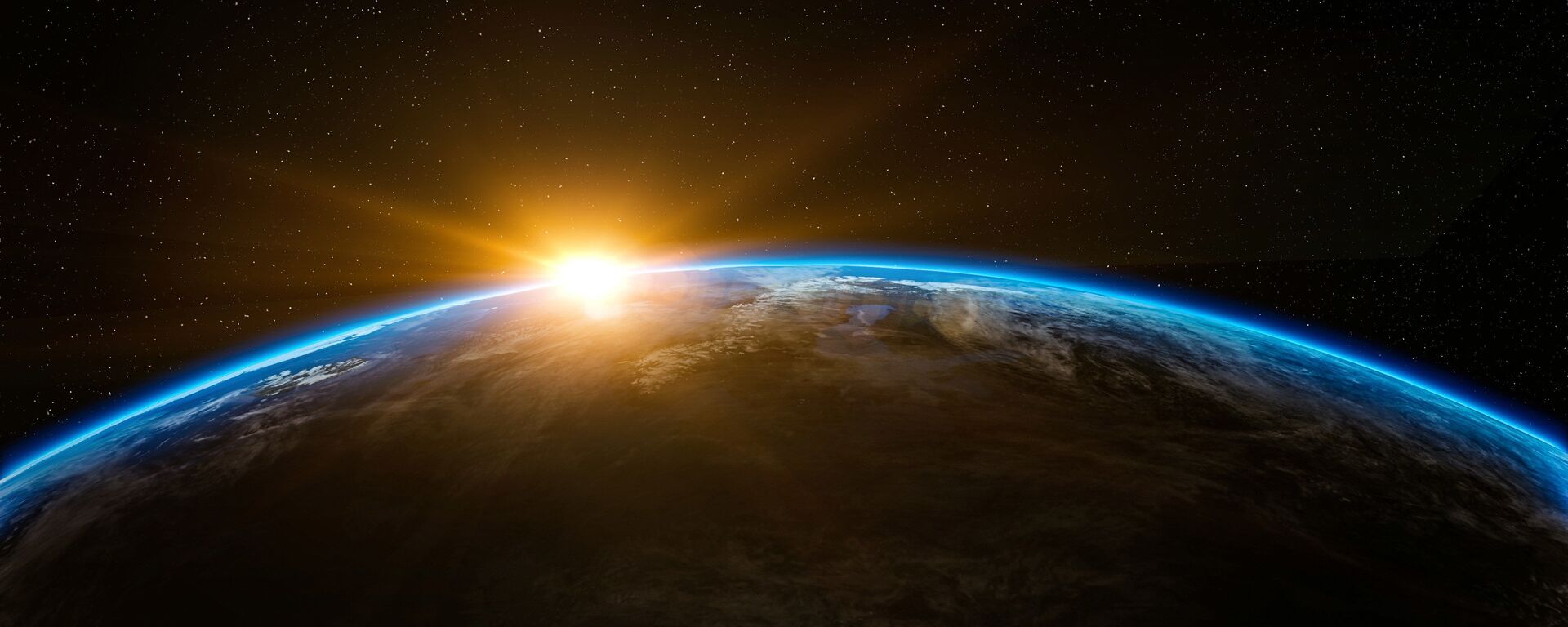https://sputnikglobe.com/20220807/supermoons-glow-to-dim-meteor-showers-shine-1099346624.html
Supermoon's Glow to Dim Meteor Shower's Shine
Supermoon's Glow to Dim Meteor Shower's Shine
Sputnik International
The Perseid meteor shower is one of the most popular shows for Astrophiles and annually graces the heavens between July 14 and September 1. The meteors are... 07.08.2022, Sputnik International
2022-08-07T02:19+0000
2022-08-07T02:19+0000
2023-04-21T10:42+0000
astronomy
stars
moon
supermoon
science & tech
https://cdn1.img.sputnikglobe.com/img/07e6/01/0f/1092276202_0:0:1920:1080_1920x0_80_0_0_7cfc44439ec79e6ecc5718c4b2944299.jpg
This year the Perseid meteor shower will occur on the 12th and 13th of August. While the show would otherwise be perfect timing for Astrophiles hoping to catch a glimpse of one of the best known meteor showers visible from Earth, this year the meteor shower will coincide with August’s full moon, which will make viewing meteors difficult due to the moon’s bright light.Compared to other astronomical bodies, the moon is relatively dim, it is also one of the least reflective objects in the solar system, but since it’s so close to the Earth, it appears bright to from Earth. Just a day before the Perseid meteor shower will occur (on August 11 at 9:35 p.m.) the moon will be opposite the sun, outshining the highly anticipated "shooting stars."The Sturgeon moon, a supermoon in August, is one of the last of this year’s supermoons and will appear brighter than a “normal” full moon. Supermoons appear particularly large because they are closer to the earth.The Perseids are bits of ice and rock left behind by the Comet Swift-Tittle, which passed by Earth in 1992. Swift-Tittle is one of the largest known objects to repeatedly pass Earth and takes 133 years to orbit the sun. It won't make its way back to Earth until the year 2125.The moon may outshine the Perseids this August, but there may be a chance to catch a glimpse of them after the moon begins to wane, as the “shooting stars” won’t begin to disappear until the 21st and 22nd of August and will be gone completely by September 1.
https://sputnikglobe.com/20220803/earth-beats-own-rotation-record-by-ending-a-day-159ms-faster-1098077596.html
Sputnik International
feedback@sputniknews.com
+74956456601
MIA „Rosiya Segodnya“
2022
Mary Manley
https://cdn1.img.sputnikglobe.com/img/07e6/01/0b/1092187887_0:0:2048:2049_100x100_80_0_0_0c2cc4c84f89aff034cc55bb01fb6697.jpg
Mary Manley
https://cdn1.img.sputnikglobe.com/img/07e6/01/0b/1092187887_0:0:2048:2049_100x100_80_0_0_0c2cc4c84f89aff034cc55bb01fb6697.jpg
News
en_EN
Sputnik International
feedback@sputniknews.com
+74956456601
MIA „Rosiya Segodnya“
Sputnik International
feedback@sputniknews.com
+74956456601
MIA „Rosiya Segodnya“
Mary Manley
https://cdn1.img.sputnikglobe.com/img/07e6/01/0b/1092187887_0:0:2048:2049_100x100_80_0_0_0c2cc4c84f89aff034cc55bb01fb6697.jpg
astronomy, stars, moon, supermoon, science & tech
astronomy, stars, moon, supermoon, science & tech
Supermoon's Glow to Dim Meteor Shower's Shine
02:19 GMT 07.08.2022 (Updated: 10:42 GMT 21.04.2023) The Perseid meteor shower is one of the most popular shows for Astrophiles and annually graces the heavens between July 14 and September 1. The meteors are referred to as Perseids because the point in which they appear to originate is within the constellation of Perseus.
This year the
Perseid meteor shower will occur on the 12th and 13th of August. While the show would otherwise be perfect timing for Astrophiles hoping to catch a glimpse of one of the best known meteor showers visible from Earth, this year the meteor shower will coincide with August’s full moon, which will make viewing meteors difficult due to the moon’s bright light.
"Sadly, this year's Perseids peak will see the worst possible circumstances for spotters," said Bill Cooke, a NASA astronomer and leader of the Meteoroid Environment Office at NASA’s Marshall Space Flight Center in Huntsville, Alabama. "Most of us in North America would normally see 50 or 60 meteors per hour, but this year, during the normal peak, the full Moon will reduce that to 10 to 20 per hour at best."
Compared to other astronomical bodies, the moon is relatively dim, it is also one of the least reflective objects in the solar system, but since it’s so close to the Earth, it appears bright to from Earth. Just a day before the Perseid meteor shower will occur (on August 11 at 9:35 p.m.) the moon will be opposite the sun, outshining the highly anticipated "shooting stars."
The Sturgeon moon, a supermoon in August, is one of the last of this year’s supermoons and will appear brighter than a “normal” full moon. Supermoons appear particularly large because they are closer to the earth.
The Perseids are bits of ice and rock left behind by the Comet Swift-Tittle, which passed by Earth in 1992. Swift-Tittle is one of the largest known objects to repeatedly pass Earth and takes 133 years to orbit the sun. It won't make its way back to Earth until the year 2125.
The moon may outshine the Perseids this August, but there may be a chance to catch a glimpse of them after the moon begins to wane, as the “shooting stars” won’t begin to disappear until the 21st and 22nd of August and will be gone completely by September 1. 




